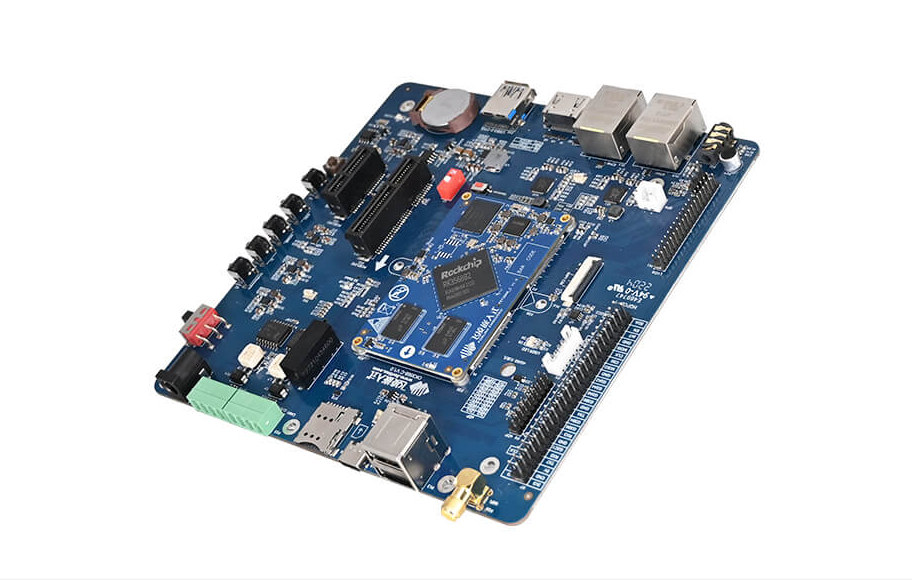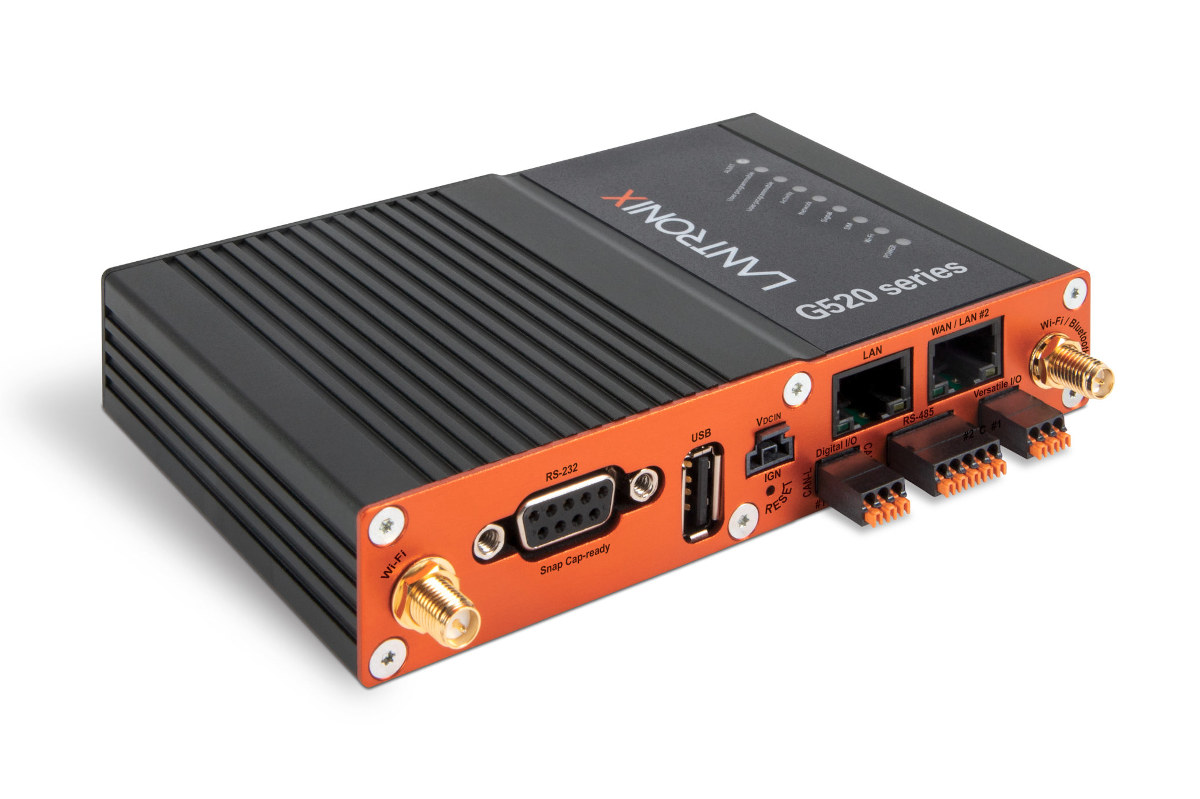Around 400 gallons of gas were stolen from a gas station a few days ago by using a special remote to put it in “dispense mode” and get the gasoline for free. It is not an isolated incident and over the years gas pumps have been hacked using different methods, with some running embedded Linux and connected to the Internet just like a router. We previously noted devices connected o the internet like IP cameras and routers were often not secure since most were configured with default credentials (username/password). I went backpacking a few years ago, and each time I stayed somewhere I tried to log in to the router web interface using the infamous admin/admin, and it worked about 80% of the time. In 2016, I also noticed that changing the default credentials may not help, as the telnet port of my modem router was opened to the outside […]
OK3568-C SBC provides dual GbE, WiFi 5, 4G/5G connectivity, multiple display interfaces
Taking a break from the recent RK3588 news, let’s check out a board based on Rockchip RK3568 quad-core Arm Cortex-A55 processor with the Forlinx OK3568-C single board computer equipped with up to 8GB RAM and 64 GB storage. The board is comprised of the company’s FET3568-C system-on-module and OK3568-C carrier board offering multiple display interfaces, plenty of connectivity options with dual Gigabit Ethernet, WiFI 5, Bluetooth 5.0, as well as optional 4G or 5G cellular connectivity, and PCIe slots. OK3568-C specifications: FET3568-C SoM SoC – Rockchip RK3568 quad-core Cortex-A55 processor @ up to 2.0 GHz with Mali-G52-2EE GPU supporting OpenGL ES 1.1, 2.0, 3.2, Vulkan 1.0,1.1, OpenCL 2.0, 1 TOPS NPU, 4K H.264, H.265, VP9 VPU System Memory – 2GB (default), 4GB, or /8GB DDR4 Storage – 16GB eMMC flash 4x 80-pin board-to-board connectors with I/Os and power signals Supply Voltage – DC5V Dimensions – 70 x 45mm Temperature range […]
ANNKE NC800 security camera review – Part 2: color night vision, vehicle & human detection
I started the review of ANNKE NC800 security camera with color night vision last month by checking out the specifications and package content. I’ve now had time to install and test the camera with a focus on night image quality and person and vehicle detection. ANNKE NC800 installation The camera should be powered by a PoE injector, but since I don’t have any spare one, I just used an Ethernet cable and a 12V power supply. The kit includes bits to make sure the Ethernet cable is waterproof, but I would have had to cut the plastic bit on top of my connector, so I skipped that part. The cable is also protected from rain and sun where I’ll install it. I also installed a MicroSD card after formatting it to FAT32 to make sure it is recognized by the system, but it may not be necessary as the card […]
Eufy Security Video Smart Lock is a 3-in-1 doorbell, security camera, and door lock (Crowdfunding)
Smart Home security may involve a door lock, a doorbell, and a security camera, but instead of providing three different devices, Eufy Security Video Smart Lock combines all three features into a single device that can be installed on your front door. The device’s smart lock can be opened via a fingerprint scanner, an Android app, or voice commands through Alexa or Google Assistant, while you can watch the feed from the integrated 2K camera through the app whenever motion detection, combined with human detection, detects visitors. Eufy Security Video Smart Lock key features: 2K video camera with 160° field-of-view, 4:3 aspect ratio, 4 LEDs for night vision Video storage – Stored locally with SD card in the Chime (Gray box in the photo below), optional cloud storage coming Fingerprint sensor with 0.3s unlock, self-learning algorithm PIR and Radar motion detection, human detection, Range: 6 meters Auto-lock after up to […]
Review of ANNKE NC800 Smart IP camera with color night vision – Part 1: unboxing
ANNKE NC800 is a 4K security camera with people and vehicle detection, and other AI features as tested in our Annke CZ400 review. The main differentiating factor is support for “true full color” night vision that does not rely on a spotlight, but instead a “soft light”, a BSI sensor, and f/1.0 aperture as we’ll explain in a bit more detail below. The company sent me a sample for evaluation, and today I’ll check out the specifications of the “NightChroma NC800” camera and the content of the package, before installing and focusing testing on night capture in the second part of the review. ANNKE NC800 (I91BQ) specifications Camera Image Sensor – 1/1.2″ Progressive Scan CMOS Video Codec Main stream – H.265+/H.265/H.264+/H.264 Sub-stream – H.265/H.264/MJPEG Third stream – H.265/H.264 Framerate and Video Resolution 20 fps @ 3840×2160, 3072×1728 50 Hz: 25 fps @ 2688×1520, 1920×1080, 1280×720 60 Hz: 30 fps @ […]
Android 13 developer preview released with privacy, security, and productivity improvements
Android 12 was only released in October 2021 and Google has already released the first developer preview of Android 13 with better privacy and security, efforts to improve developer productivity, and more work on better support for larger screens like tablets or Chromebooks building on the work done on Android 12L. Android 13 privacy and security features Google announces two new features related to privacy and security: Photo picker and APIs – Android 13 adds a system photo picker to share both local and cloud-based photos securely. Apps can use the photo picker APIs to access shared photos and videos without needing permission to view all media files on the device. So if an app just needs to access photos or videos, there’s no need to request full storage access. The photo picker will also be brought to through Google Play system updates on devices running Android 11 and higher, […]
Lantronix G520 cellular gateways target industrial communication, cybersecurity, and transportation
Lantronix G520-series 4G LTE Cat 4 and 5G cellular gateways are designed to address challenges in Industry 4.0, security, and transportation markets with three/four separate gateways all based on an unnamed ARM926EJ-S-based CPU running at 600 MHz that’s most likely Microchip SAM9X60 processor introduced in 2020. All gateways are from the same base with variation for specific markets: G526 Industrial Gateway with LTE Cat 4 Ethernet, Serial, I/O, Fieldbus conversion, and other industrial protocols G527/G528 Security Gateway with LTE Cat 13 or 5G, built-in cryptographic secure element and PSE-PoE G528 Transportation Gateway (coming soon) with LTE Cat 4, GNSS, accelerometer, CAN Bus reading, and other tracking features Lantronix G520-series specifications: SoC – ARM926EJ-S-based processor running at 600 MHz with 32 KB instruction cache and 32KB data cache System Memory – 256MB DDR2 SDRAM Storage – 8MB SPI flash for OS, 256MB parallel NAND flash, MicroSD slot, or USB flash drive […]
FOSDEM 2022 schedule with embedded Linux, IoT, automotive… sessions
While typically taking place in Brussels, Belgium, FOSDEM 2022 will take place online just like FOSDEM 2021 due to COVID-19 restrictions. The good news is that it means anybody can attend it live from anywhere in the world, and makes it more like “FOSDIM”, replacing European with International, in “Free and Open Source Developers’ European Meeting”. FOSDEM 2022 will take place on February 5-6 with 637 speakers, 718 events, and 103 tracks. I’ve made my own little virtual schedule below mostly with sessions from the Embedded, Mobile and Automotive devroom, but also other devrooms including “Computer Aided Modeling and Design”, “FOSS on Mobile Devices”, “Libre-Open VLSI and FPGA”, and others. Saturday, February 5, 2022 12:30 – 13:00 – Five mysteries in Embedded Linux by Josef Holzmayr Once you start out in embedded Linux, there is a lot to do. Some things are obvious, some less so. First and foremost, […]









